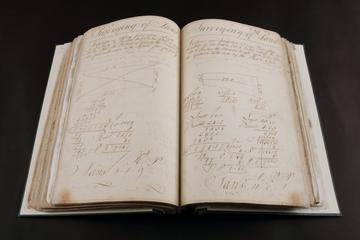
Scamp, William 1801 - 1872
- Nationality:
- English; British
(1801-1872), engineer, architect
William Scamp was born on the 5th June 1801 at Georgeham, near Barnstaple, Devon. At the age of twelve he had outstripped the knowledge of the local schoolmaster, particularly in geometry, astronomy, navigation, and land surveying, for each of which he showed a marked aptitude. However, it was engineering and architecture that he showed a natural direction to. His first work was the Assembly Rooms at Ilfracombe, which was carried out under his personal supervision, his design having been selected in competition.
Scamp subsequently worked with Sir Jeffry Wyatville, serving as a Clerk of Works during the reconstruction of Windsor Castle for over a decade. In 1838, Scamp joined the Admiralty at Woolwich Dockyard. Between 1841 and 1844, he worked on three major projects in Malta: the No. 1 Dock in Cospicua, the Royal Naval Bakery in Birgu and St Paul's Pro-Cathedral in Valletta. Queen Adelaide, who had commissioned the cathedral, presented Scamp with a silver candelabrum as a gratitude for his work upon his return to England. During his stay in Malta, he had a daughter named Adelaide Frances Melita (born 1844) with his partner Harriet Wynder.
In 1845 Scamp was recalled from Malta to take up the position of Chief Assistant to the Director of Admiralty Works. He was subsequently involved in reequipping naval bases around the British Empire in order to make them suitable for ironclads. By 1860, Scamp was credited with major works at the Admiralty establishments in the colonies of Malta, Gibraltar and Bermuda as well as naval bases in Britain itself, such as Deptford, Woolwich, Sheerness, Portsmouth and Pembroke. He became Deputy Director to G. T. Greene in 1852, which had a role in designing iron-framed structures for the Admiralty in the 1850s.
Scamp was married, and he was devoted to his wife and children. His two sons predeceased him. He retired in 1867, and he kept himself busy by designing a land reclamation project for Morecambe Bay and making plans for improving Lancaster Harbour. He died at the age of 70 on 13 January 1872 from lung congestion after a week-long illness. He was buried at Kensal Green Cemetery in London.